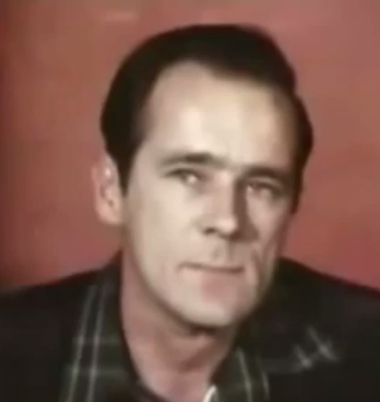More languages
More actions
Daithi Ó Conaill | |
|---|---|
 | |
| Birth name | David O'Connell |
| Born | May 17 1938 or May 20, 1938 Cork, Ireland |
| Died | January 1, 1991 Dublin, Ireland |
| Allegiance | Irish Republic |
| Service/ | Anti-Treaty Irish Republican Army (1955-1969) Provisional Irish Republican Army(1969-1986) Continuity Irish Republican Army (from 1986) |
| Rank | Chief of Staff of the Continuity Irish Republican Army (from 1986) |
| Known for | Leading Republican military figure; introduced car-bombs to Northern Ireland |
| Battles/wars | Campaign of Resistance to British Occupation the Troubles |
Dáithí Ó Conaill was an Irish Republican military leader. He participated in the Campaign of Resistance to British Occupation and the Troubles as part of the Anti-Treaty Irish Republican Army, the Provisional Irish Republican Army, and the Continuity Irish Republican Army, of which he was the Chief of Staff. He was a central figure in both the Republican Movement Split of 1969/1970, after which he became Vice-President of Provisional Sinn Féin and the 1986 Provisional Movement Split.[1]
Early Life
Dáithí Ó Conaill was born David O'Connell on either May 12 or May 20 1938 at 26 Lough Road, Cork City, County Cork, Ireland. His parents were Eugene O'Connell and Emma O'Sullivan. His family was staunchly Irish Republican.[1][2]
During the Irish War of Independence his uncle Michael O'Sullivan was murdered by the Black and Tans with a bayonet. His brother was another revolutionary, in addition to being an active Trade Unionist in the United States after emigrating there in 1925.[1][2]
Anti-Treaty Sinn Féin and IRA
At seventeen years old he joined Anti-Treaty Sinn Féin and the Anti-Treaty Irish Republican Army in 1955. He was second-in-command to Seán Garland at the IRA Raid on Brookeborough Royal Ulster Constabulary Barracks, where volunteers Sean South and Fergal O'Hanlon were killed.[1]
After the raid he was interned at Mountjoy Jail and Curragh Military Prison. He escaped in September of 1958 with Ruairí Ó Brádaigh and subsequently became IRA Director of Operations with Ó Brádaigh as Chief of Staff.[1]
He was shot six times in County Tyrone and subsequently reimprisoned in November of 1959. He was released in September of 1963.[1]
In 1964 he married Deirdre Caffrey, a cousin of Ruairí Ó Brádaigh and a fellow Irish Republican. They had two daughters and one son.[1]
He initially was supportive of the Marxist-oriented leadership of Cathal Goulding, but he eventually opposed the perceived abandonment of the armed struggle and Goulding's electoralist efforts. He became IRA Officer Commanding in Donegal, Derry, Tyrone, and Fermanagh in July 1969.[1]
Provisional Movement Military Leader
He was a leading member on the abstentionist side of the Republican Movement Split of 1969/1970. He became a member of the Provisional Irish Republican Army Council and the Vice-President of Provisional Sinn Féin after the split.[1]
In 1970 he began to organize connections with Irish Republicans in the United States, helping to form the Irish Northern Aid Committee.[1]
He contributed to the movement of the Provisional movement to Socialism with Ruairí Ó Brádaigh and helped to formulate the Éire Nua plan with him.[1]
He became a leading theoretician in the Provisional movement, calling for 'one big push' against British imperialism to force the British to negotiate and withdraw from the North, and introducing the car-bomb as a weapon to Northern Ireland.[1]
He began to build connections in continental Europe, arranging an arms shipment for then-Socialist Czechoslovakia. During this trip he was accompanied by Maria McGuire, a fellow Irish Republican who later changed her politics to become a Conservative and Unionist Party politician. The arms were seized at Schiphol Airport in the Netherlands, with he an McGuire being forced to escape arrest.[1]
He issued a televised threat to the United Kingdom that the IRA would bring the conflict to Britain. In December 1974 he led the IRA delegation to peace talks with Protestant leaders, leading to a year-long ceasefire.[1]
He was imprisoned in 1975.[1]
The IRA reorganized from his strategy of 'one big push', creating the 'long war' plan. Around this time tensions between the Ó Brádaigh-Ó Conaill Southern leadership and the Northern membership of the Provisional movement began to grow.[1]
In 1977 Ó Conaill participated in a 47 day hunger strike in Portlaoise Prison with 19 other IRA volunteers. He was released from prison in August 1977. He played a role in the H-Block and Armagh committee, which organized support for Republican political prisoners, and participated in the campaign to elect Bobby Sands during his hunger strike.[1]
In 1983 Ó Conaill resigned from his position as Vice-President of Provisional Sinn Féin after the party abandoned the Éire Nua plan.[1]
Continuity Irish Republican Army and Republican Sinn Féin
Along with Ruairí Ó Brádaigh, Ó Conaill was the leading figure in the 1986 Provisional Movement Split, where he and many other delegates at the 1986 Sinn Féin Ard Fheis walked out over the Provisional's adoption of electoralism. He became Vice-President of Republican Sinn Féin and Chief of Staff of the Continuity Irish Republican Army.[1]
He taught technical drawing and woodwork at Old Bawn Community School in Tallaght.[1]
He died in his home on January 1, 1991 at the age of 52. Shortly before his death he drafted Towards a Peaceful Ireland.[1]
The Republican Sinn Féin headquarters in Dublin is named Teach Daithi Ó Conaill after the lifelong Republican.[1]
